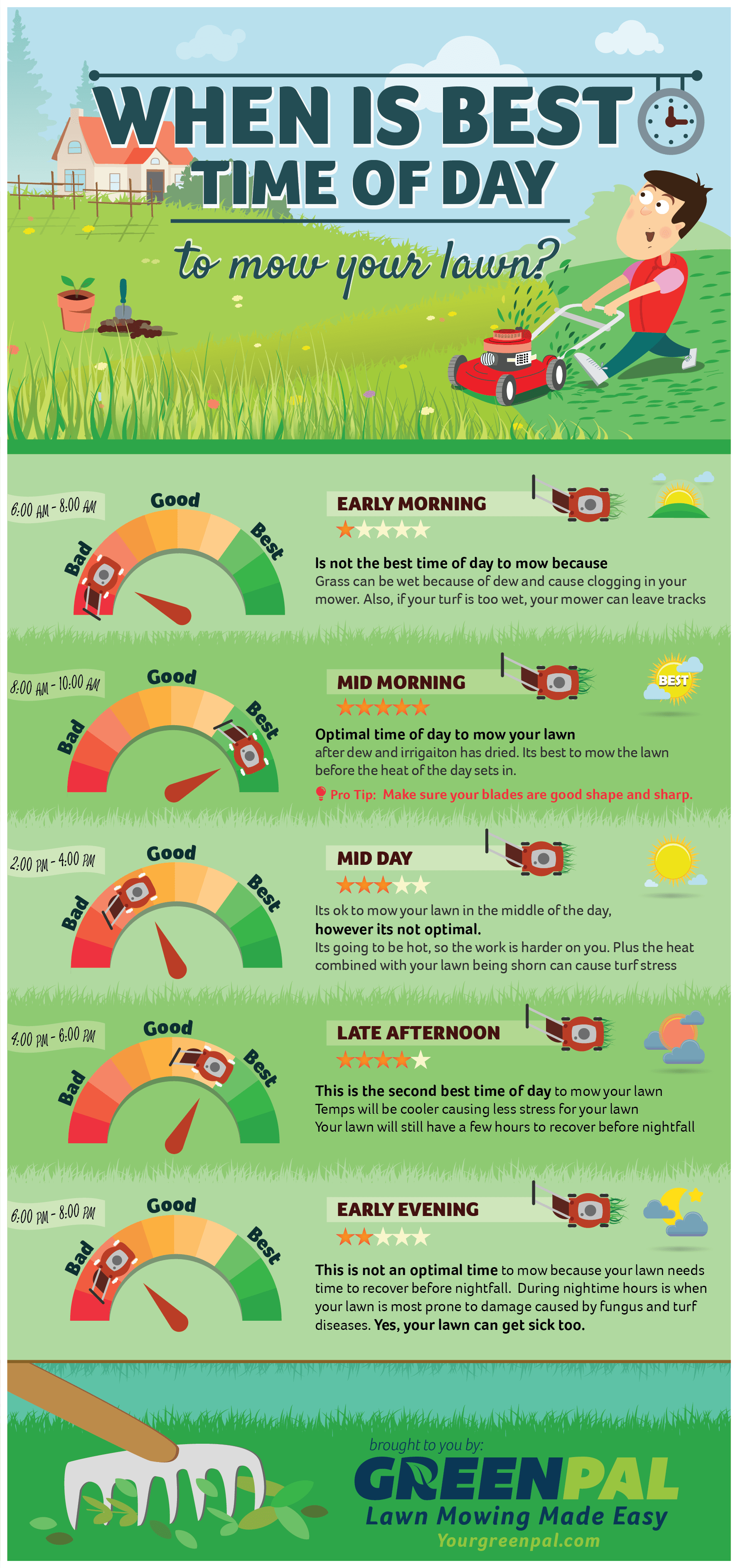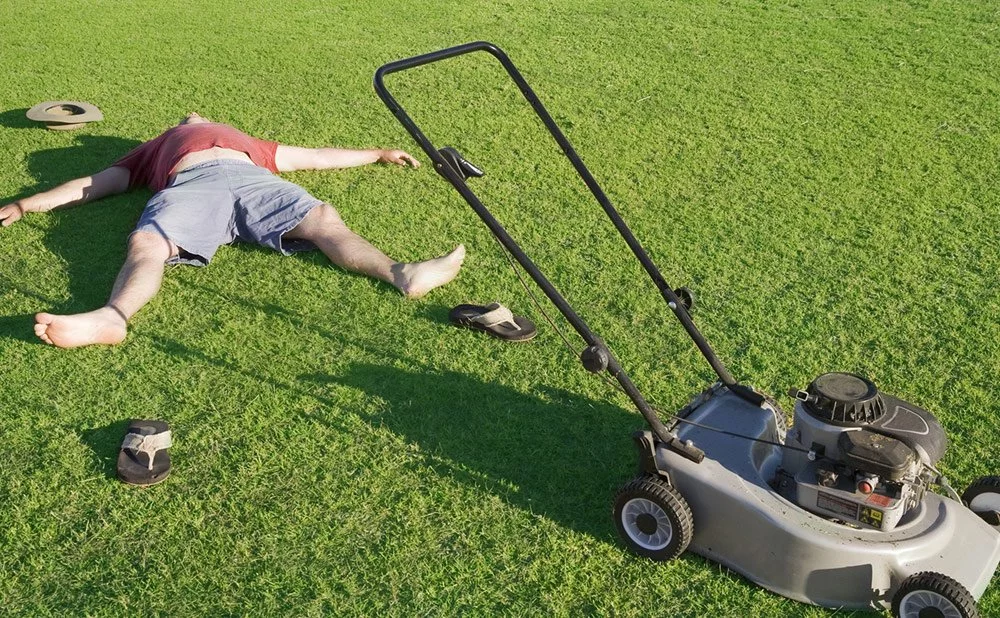The best time to start mowing your lawn is in early spring. The grass should be about three inches tall before the first cut.
Starting to mow at the right time can make a big difference. Early spring is ideal because the grass begins to grow actively. Cutting the grass when it reaches three inches helps it stay healthy. Mowing too early or too late can harm your lawn.
Early mowing helps the grass establish strong roots. This leads to a healthier, greener lawn. Timing your first mow right helps prevent weeds and pests. It sets the stage for a beautiful lawn all season long. Read on to learn more about the best practices for mowing your lawn.
Spring Mowing
Grass grows best when the soil is warm and moist. Ideal conditions include a temperature of around 55°F. Soil moisture should be checked before mowing. Too wet or dry can harm the grass. Look for signs of new growth. This shows grass is ready for mowing. Avoid mowing if the grass is still dormant. Always use a sharp mower blade. This ensures a clean cut.
Early spring care is vital for a healthy lawn. Start by removing debris from the yard. Fallen leaves and branches can block sunlight. Check for weeds and remove them. Weeds compete with grass for nutrients. Fertilize the lawn if necessary. This provides essential nutrients for growth. Water the lawn regularly. Ensure it gets about one inch of water per week. This helps the grass stay green and healthy.

Credit: landzie.com
Summer Mowing
Summer heat can stress your lawn. Mow during cooler parts of the day. Early morning or late evening works best. Avoid mowing in midday heat. This can harm the grass. Sharp mower blades are essential. Dull blades tear the grass. This causes more stress. Leave the grass a bit taller. Taller grass shades soil and roots. This helps retain moisture. It also keeps soil cooler. This promotes healthy growth.
Water your lawn deeply. Do this less often. Early morning is best for watering. This reduces evaporation. Wet grass can be slippery. Wait until grass is dry before mowing. Wet grass clumps under the mower. This can cause uneven cuts. Proper watering and mowing keep your lawn healthy. Consistent care makes a big difference.
Fall Mowing
Pre-Winter Preparation is key for a healthy lawn. Mow the grass one last time before the first frost. Cut the grass shorter than usual. This helps prevent mold and disease. It also makes raking leaves easier. Clear the yard of any debris.
Leaf Management is another important step. Fallen leaves can smother the grass. Rake or mulch them regularly. Mulching leaves turns them into natural fertilizer. This helps the lawn stay healthy. Don’t let leaves pile up. It can damage the grass. Keep the lawn clear as much as possible.

Credit: www.yourgreenpal.com
Winter Mowing
In winter, grass does not grow much. Mowing might not be needed often. But it is still good to keep an eye on your lawn. Cut grass if it gets too long. This keeps it healthy. Make sure to keep the grass at least 3 inches tall. Short grass can get damaged by cold. Also, clean up fallen leaves. Leaves can block sunlight. Grass needs sunlight to stay healthy.
Winter is the perfect time to check your mower. Clean the blades. Sharpen them if needed. Check the oil and change it. Replace spark plugs if they look old. Store the mower in a dry place. This prevents rust. Good maintenance helps your mower last longer.
Grass Types
Cool-season grasses grow best in spring and fall. They thrive in cooler temperatures. These grasses include Kentucky bluegrass, ryegrass, and fescue. Mow them when the height reaches 3-4 inches. Cut to about 2 inches. This helps keep them healthy.
Warm-season grasses love the heat. They grow best in summer. Common types are Bermuda, zoysia, and St. Augustine. Mow these grasses when they reach 1.5-2 inches. Cut them to about 1 inch. This keeps them strong and green.
Mowing Frequency
Mow the lawn once a week for most grass types. This keeps the grass healthy. Mowing too often can harm the grass. Letting the grass grow too long can also be bad. A good rule is to cut no more than one-third of the grass height. This helps the grass stay strong and green.
Look for signs like uneven growth. Grass over 3 inches tall needs mowing. Also, if you see weeds, it’s time to mow. Another sign is if the lawn looks messy. Regular mowing keeps the lawn looking neat and healthy.
Mowing Techniques
Set your mower blade to the correct height. Cool-season grasses need a higher cut. Warm-season grasses do well with a shorter cut. Grass grows best when left a bit longer. This helps shade the soil and keeps it cool. It also helps retain moisture.
Change the mowing pattern each time. Avoid going the same way. This helps the grass stand up straight. It also prevents ruts from forming. Grass looks better with a varied pattern. It grows evenly and stays healthy.
Tools And Equipment
Early morning or late afternoon are ideal times to start mowing the lawn. These cooler parts of the day prevent grass stress and promote healthy growth.
Choosing A Mower
Picking the right mower is important. Push mowers are good for small yards. Riding mowers are better for big lawns. Electric mowers are quiet and eco-friendly. Gas mowers are powerful and work well for thick grass. Choose one that fits your lawn size and needs.
Essential Accessories
Accessories make mowing easier. Grass catchers collect clippings. Mulching kits help return nutrients to the soil. Edgers keep lawn edges neat. Trimmers help with hard-to-reach spots. Safety gear like gloves and goggles protect you. Always use the right accessories for a great lawn.

Credit: enjaypm.com
Frequently Asked Questions
What Month Should I Start Mowing My Lawn?
The best month to start mowing your lawn depends on your region. Generally, early spring, around March or April, is ideal.
How High Should The Grass Be Before Mowing?
Grass should be around 3 inches tall before you start mowing. This length ensures healthy growth and prevents damage.
Is It Better To Mow In The Morning Or Evening?
Mowing in the late afternoon is best. It allows grass to recover overnight and prevents stress during the hottest part of the day.
Should I Water The Lawn Before Mowing?
It’s best to mow dry grass. Wet grass can clog your mower and leave clumps on the lawn, causing uneven cuts.
Conclusion
Starting lawn mowing at the right time is crucial for a healthy lawn. Early spring is ideal. Grass needs to grow a bit before the first cut. Aim for blades to be 3-4 inches tall. Mow when soil is dry to avoid damage.
Maintain your mower for a clean cut every time. Regular mowing keeps your lawn lush and green. Follow these tips for a beautiful yard all season. Happy mowing!

My mission is to help you bring the beauty of nature indoors with expert advice, detailed plant care guides, and creative design ideas.





Leave a Reply